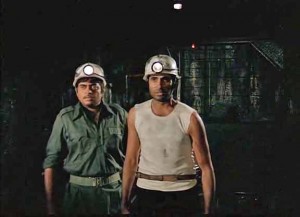One of the spine-chilling disasters in the history of modern India happened at Chasnala coal mine near Dhanbad in 1975. Flooding of mines caused death of 370 miners. Four years later, film producer and director, Yash Chopra took the initiative to recreate the tragedy through his Hindi movie ‘Kaala Patthar’. Featuring a list of actors like Amitabh Bachhan, Shatrughan Singha, Shashi Kapoor, Rakhi Gulzar, Parveen Babi, and Neetu Singh, Chopra entrusted Salim-Javed duo the task of writing the script. Projecting the hopelessness and susceptibility to injuries that miners are exposed to as part of their work, the film had Prem Chopra playing a ruthless mine owner who weighs money over the lives of the people working for him. Living a life deprived of even the most basic necessities like medical supplies and good equipment, mine workers Vijay (played by Amitabh Bachhan), Mangal (played by Shatrughan Sinha) and Ravi (played by Shashi Kapoor) come forward to rescue their fellow workers when water floods the coal mine endangering the lives of numerous fellow mine workers. As Vijay, Mangal and Ravi toil relentlessly, a Sikh truck driver played by Parikshit Sahni comes forward with his Tata L1210 as the rope of the hoist that is fetching the mine workers breaks during a critical rescue operation. He attaches the rope to the back of his truck, turning himself and his trusted truck into a saviour. The lifting operations resume.
A result of a collaboration between Telco and Daimler AG in the early 50s, the Tata L1210 soon became a popular truck in India. It came with round headlights placed in their shells on the mudguard. The long bonnet between the mudguards housed the OM 312 engine. Located longitudinally, the 4.6-litre four-cylinder diesel engine produced 110 hp of power, and was mated to a five-speed transmission. Brakes were service hydraulic assisted by single chamber air pressure booster. Steering was of the recirculating ball type. Suspension was made up of semi-elliptic silicon-manganese leaf springs with hydraulic telescopic shock absorbers. The front had 12 leaves; rear had wider and thicker 10 main leaves and seven auxiliary leaves.





















